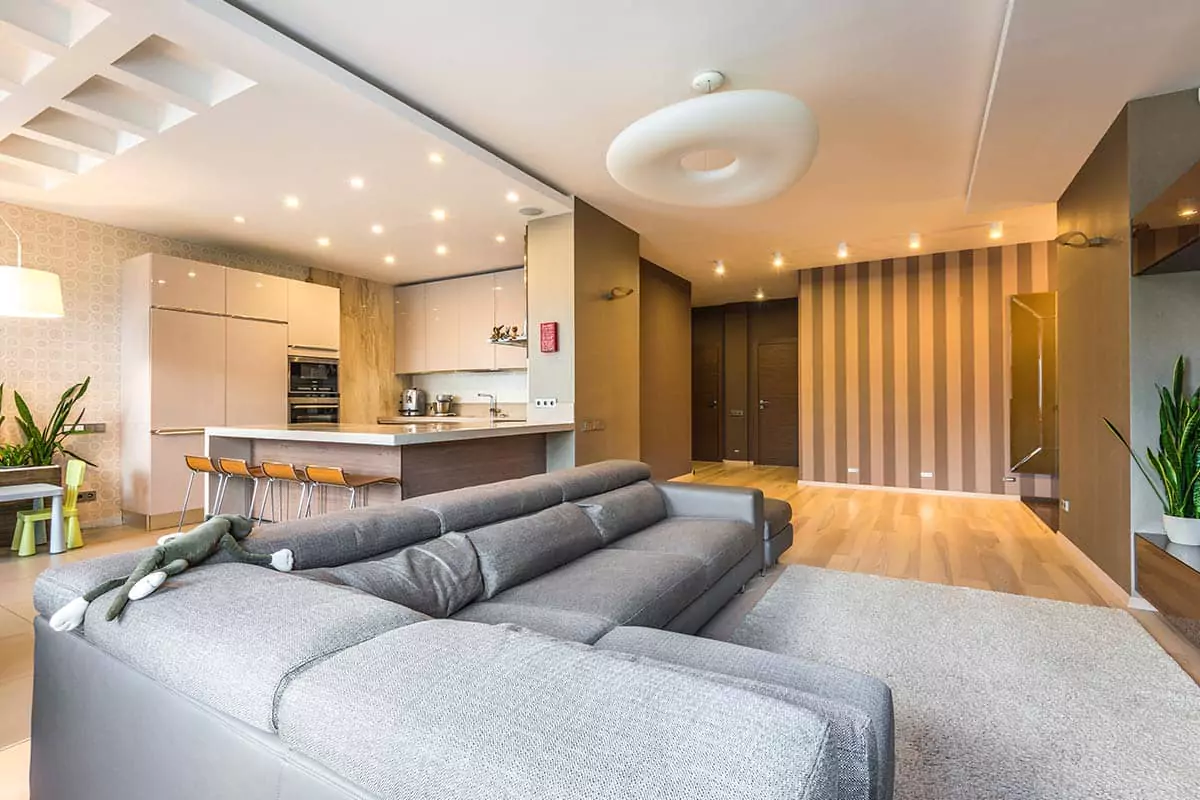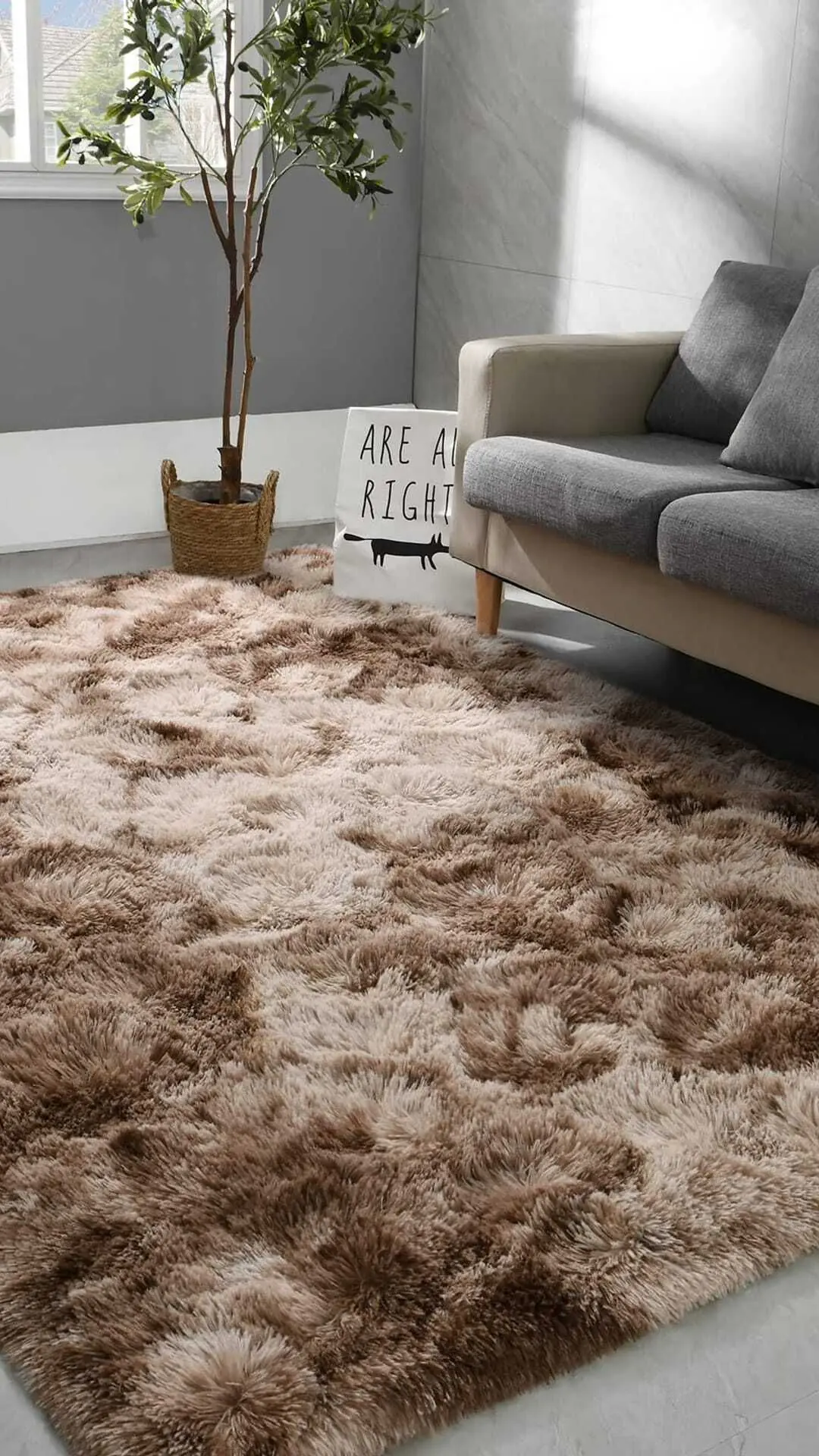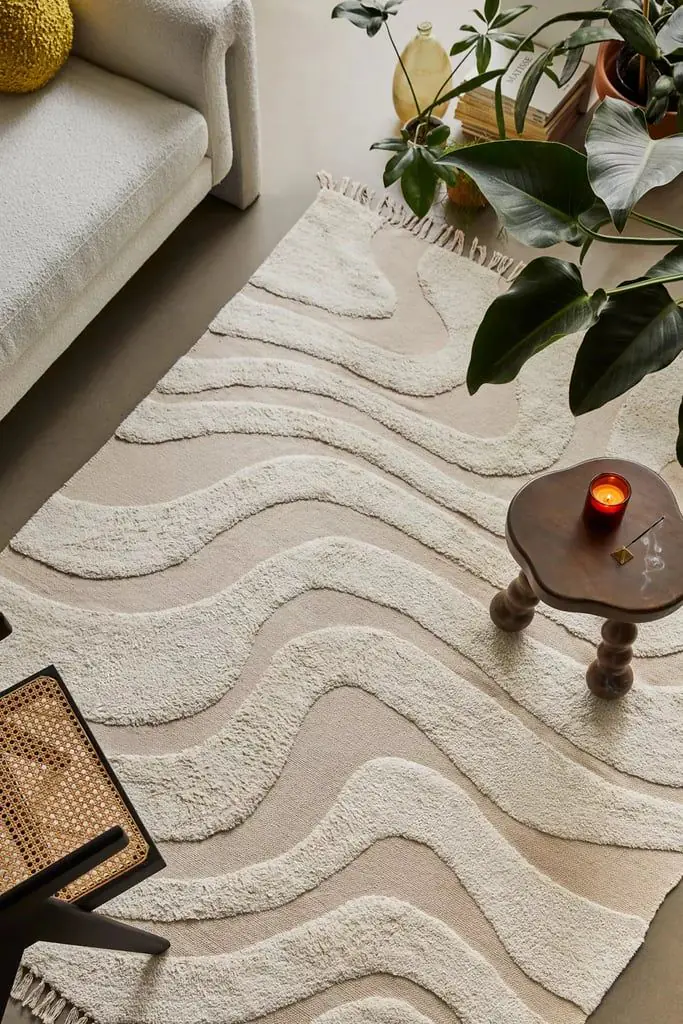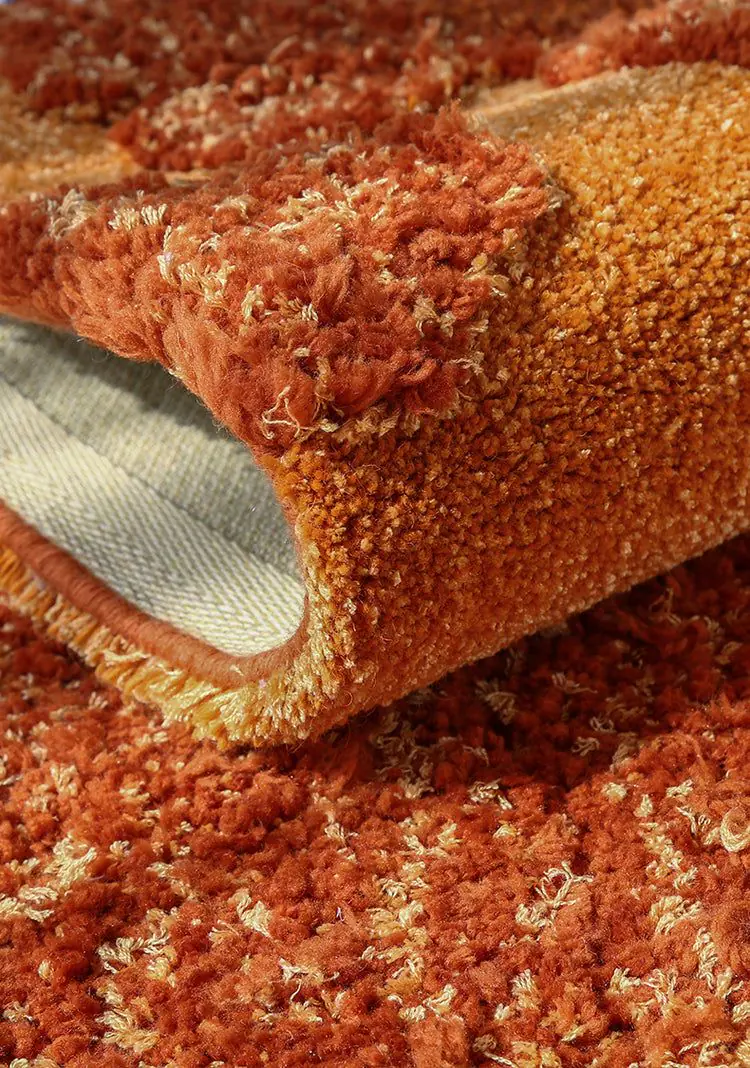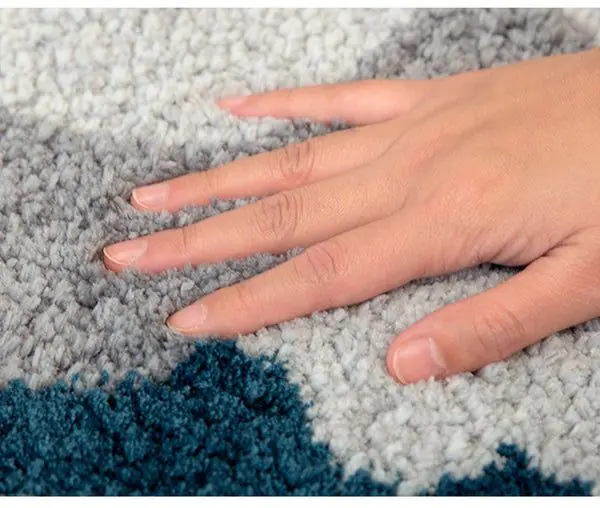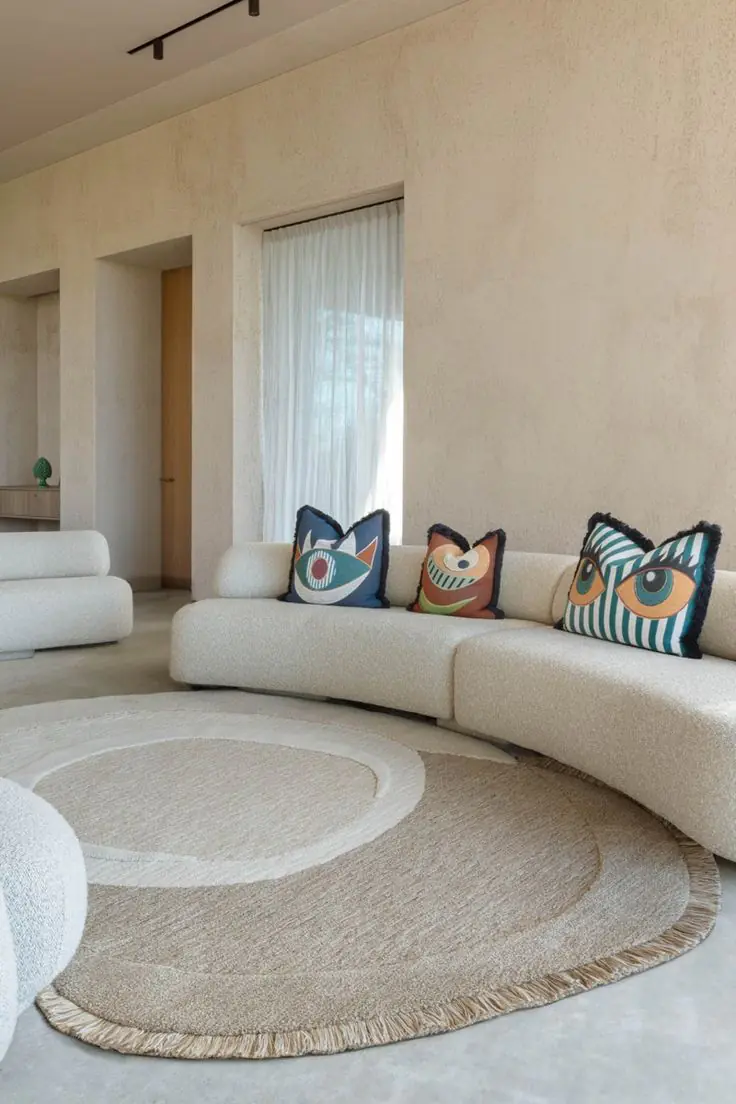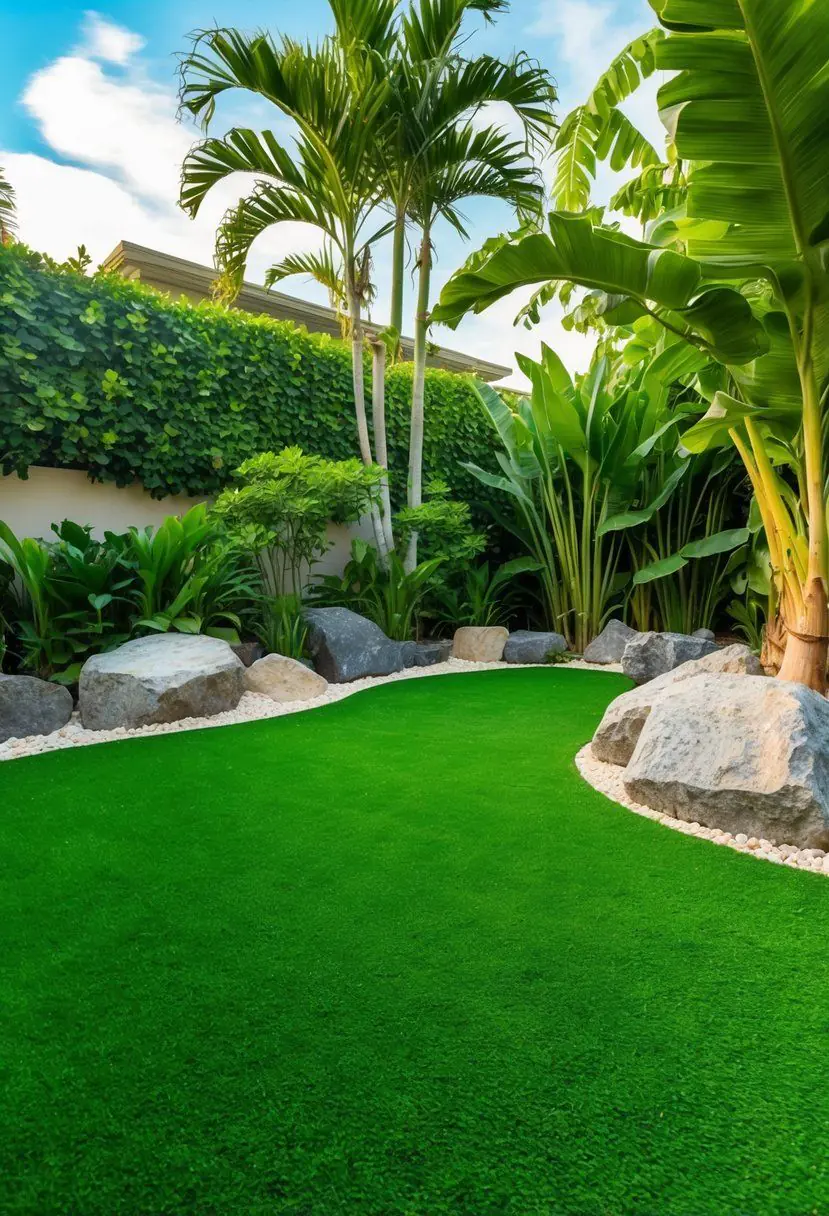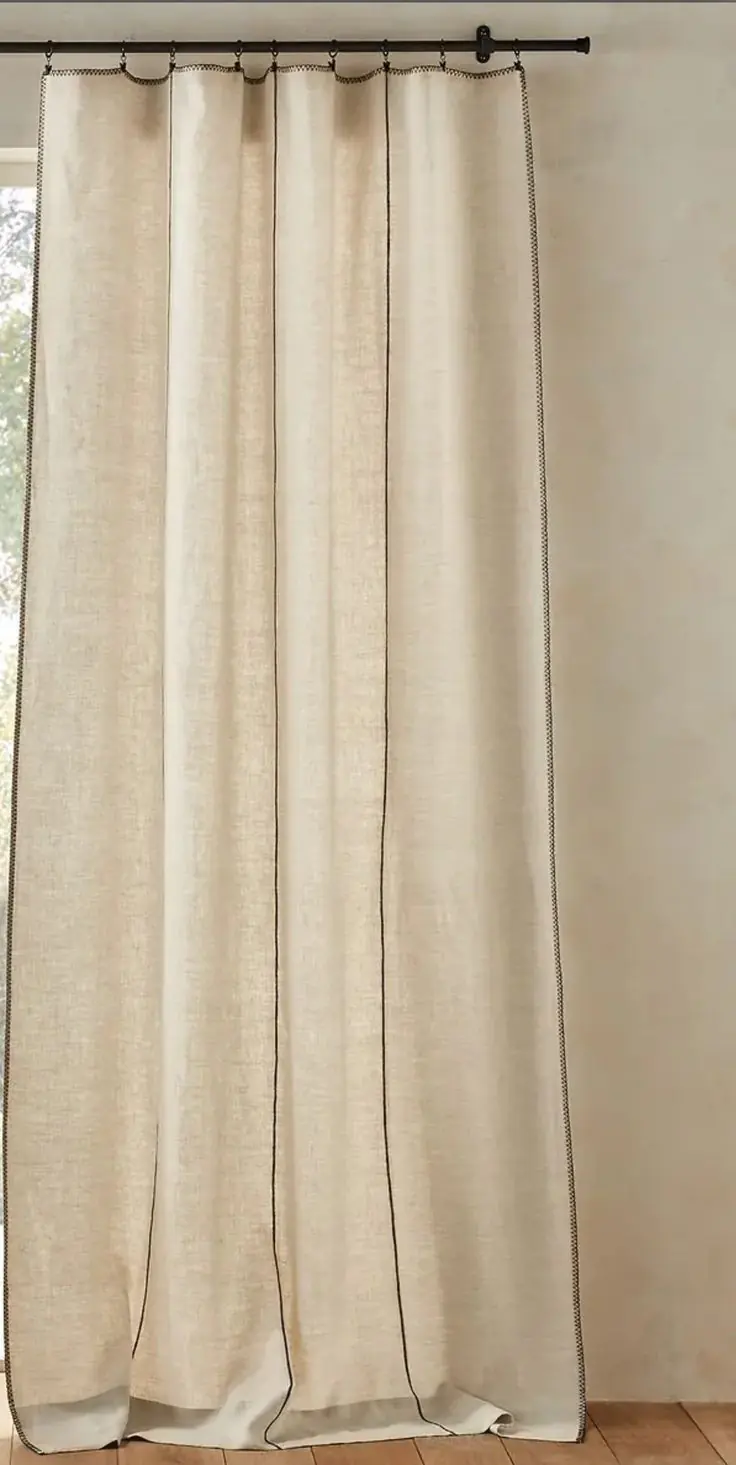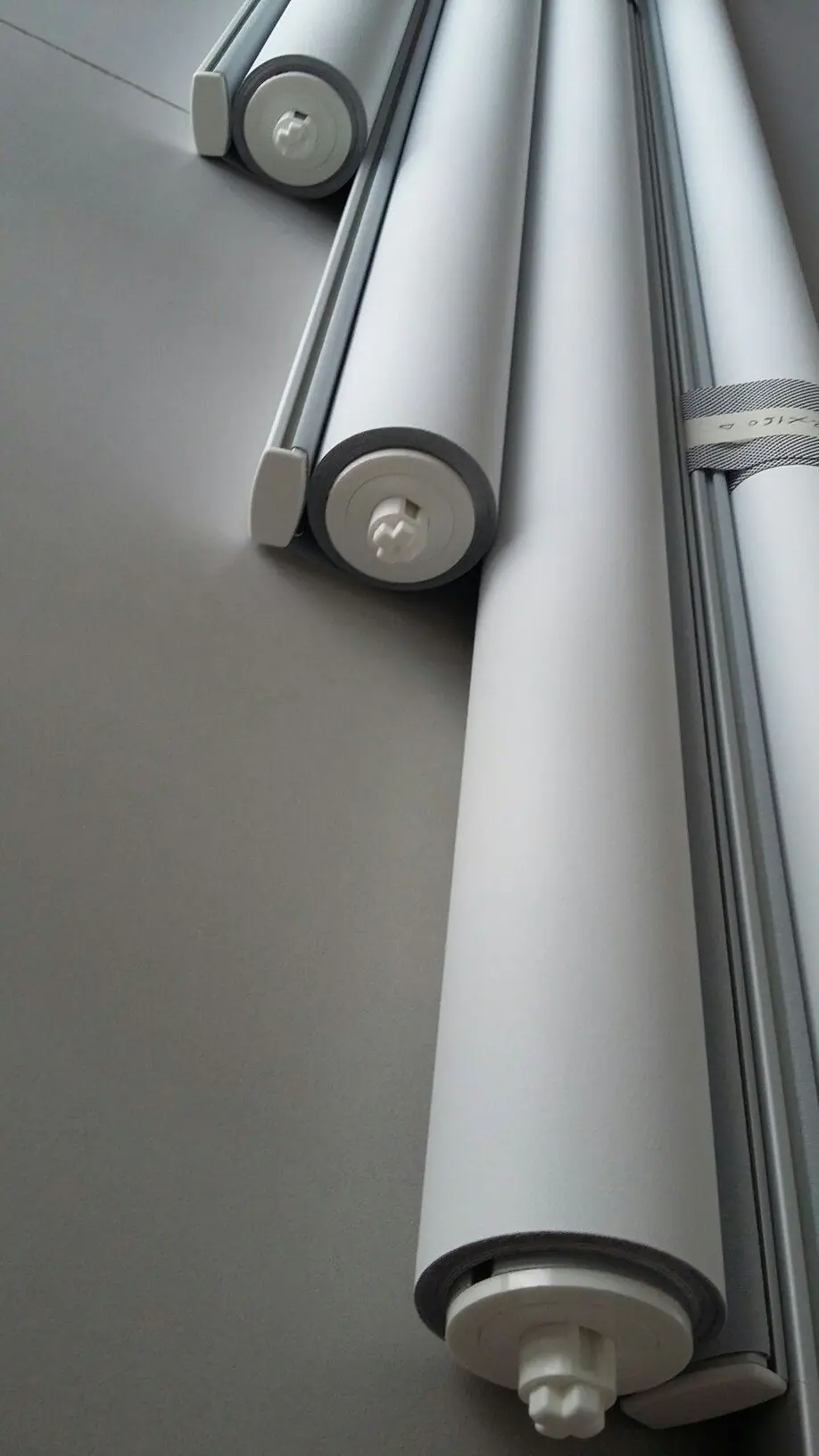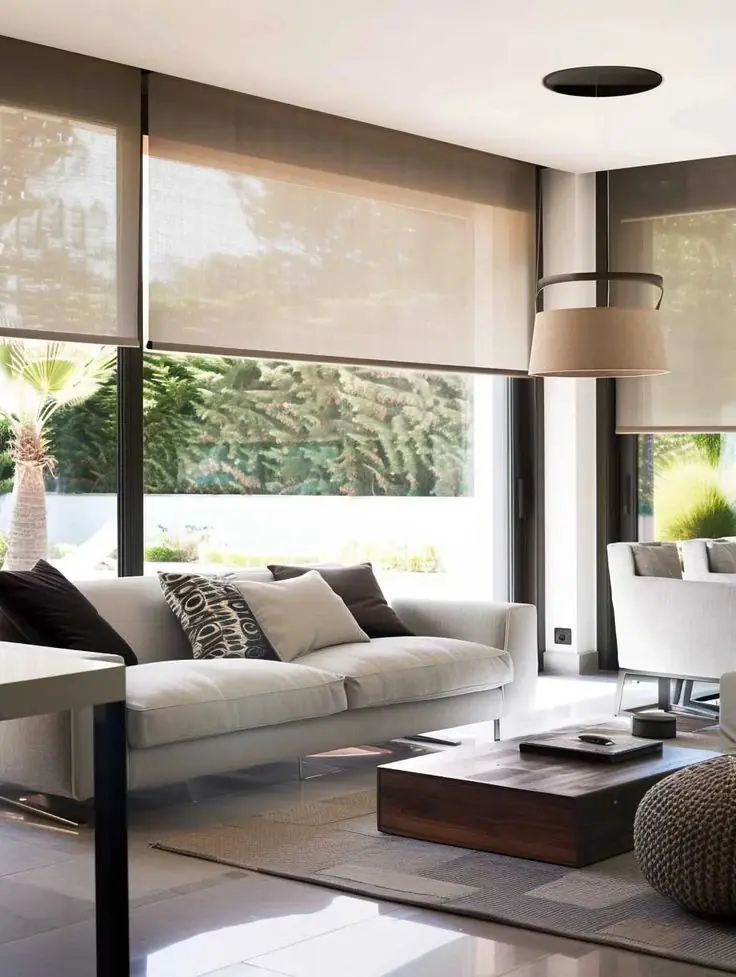Homes in the UAE often tell their story from the floor upward. Before a sofa arrives or a table finds its place, the ground receives its first companion, and that companion is usually a soft, patterned surface that invites people to sit, to talk, and to share time. Carpets and Rugs have served this role for centuries. They soften echoes in tall rooms, they hold furniture in quiet conversation, and they keep a record of family life. In an Abu Dhabi villa a host rolls out a new piece before guests arrive. In a Dubai Marina apartment a modern rug rests beneath a glass coffee table. In a Sharjah home a grandfather points to a border he remembers from his youth. Each thread acts like a quiet historian.
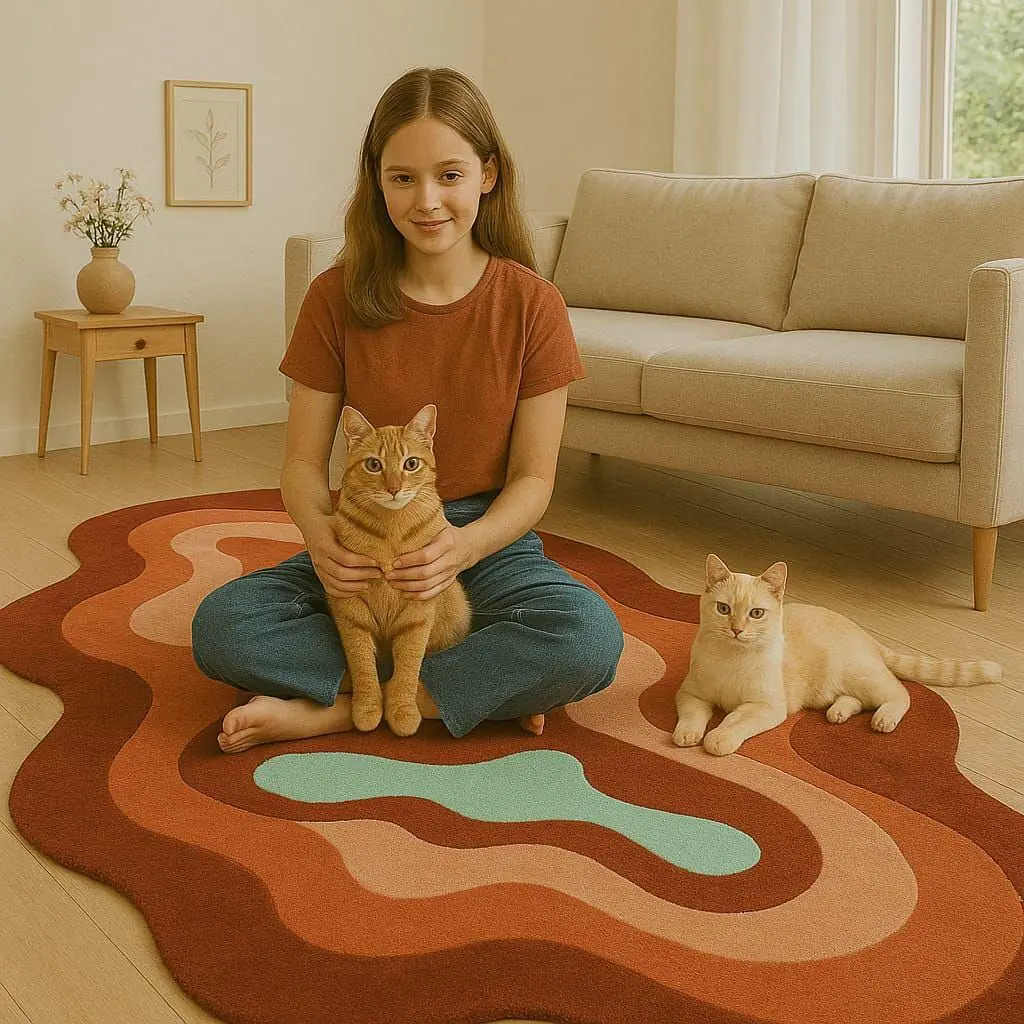
What follows is a long walk through time, from the first woven grounds of nomadic life to the busy souks that traded patterns across seas. Along the way there are detours through workshop practices, household habits, climate considerations, and simple mathematics for good room sizing. If you would like to jump directly to practical help choosing or sizing a piece today, visit the section titled Instylea further below. Otherwise, we begin with origins, and with the oldest reason people ever had for weaving, which is the need to bring comfort to the place where they sit together.
- Origins that shaped carpets and rugs
- Trade routes, ports, and the long journey of patterns
- Islamic art, prayer, and the quiet grammar of design
- Bedouin memory and the Emirati majlis
- Materials that define character
- Carpets and rugs in different spaces
- Weaving traditions and the patience of craft
- Economics, souks, and the price of comfort
- Modern usage in UAE interiors
- Instylea and the present moment
- Caring for carpets and rugs
- Choosing the right carpet rug for your home
- Carpets and rugs as art
- Outdoors, runners, and small places with big voices
- Numbers, budgets, and quiet pride
- Rugs and carpets, words that meet in the middle
Origins that shaped carpets and rugs
Long before cities rose on the Gulf, families in dry regions turned to textiles that traveled easily. A woven floor could be rolled at dawn, tied to a camel, and unrolled at dusk in a new camp. The design could be simple stripes if speed mattered, or patient knots if time allowed. Over years these early choices formed regional signatures. A village might favor a certain red, a tribe might prefer a bold stripe. As generations passed, these preferences settled into language. People could read a rug the way they read handwriting, and they knew where it came from even before a seller spoke.
In the Arabian Peninsula, woven ground coverings had clear jobs. They protected the interior of tents from sand, they marked out the majlis, and they offered a clean, soft place to serve coffee. Form followed need. A flatweave shed grit with a shake, a pile weave held warmth when nights turned cool. By the time coastal towns grew into trading centers, the habit of gathering on textile floors was already part of daily life.
Trade routes, ports, and the long journey of patterns
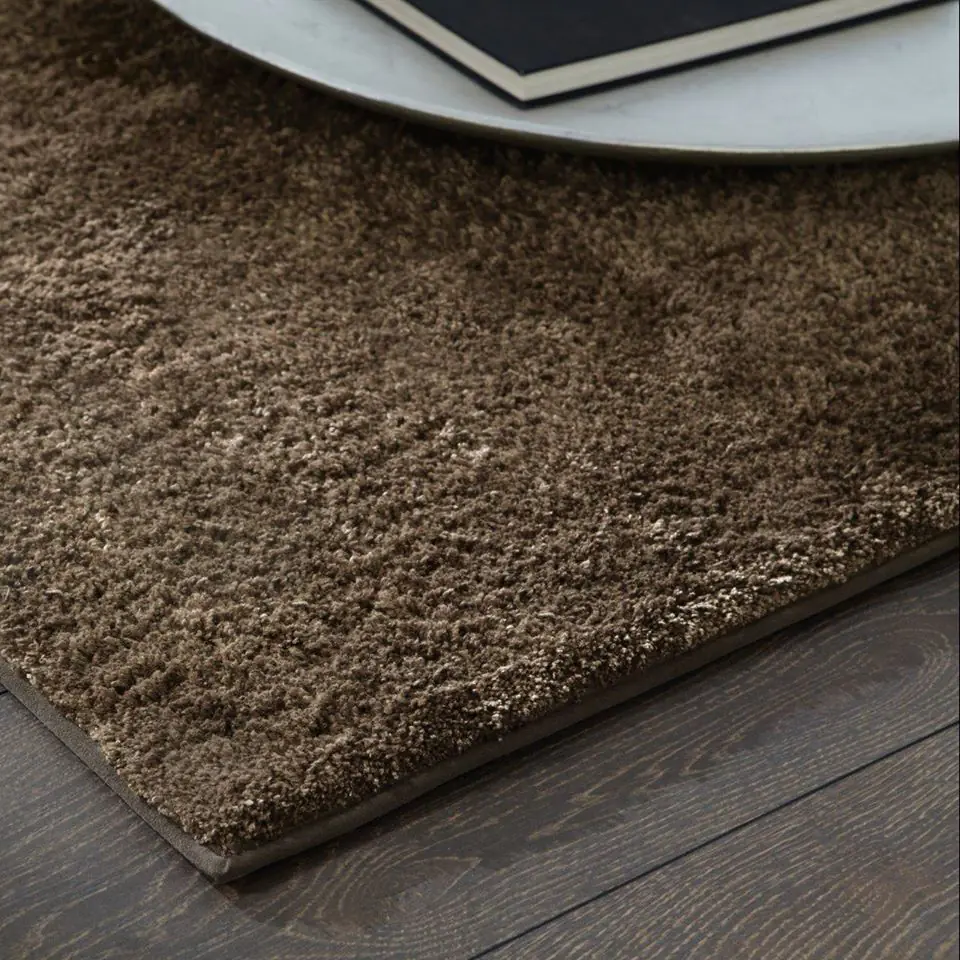
Trade gave carpets and rugs their passport. Caravans moved along inland routes where bells sounded at dusk, and boats hugged the Gulf coast waiting for good wind. Bales of wool and silk left workshops and found their way to market courtyards. Towns that would one day be called Dubai and Sharjah became places where many styles met. With each exchange, patterns learned to adapt. A border that began in one region appeared in another with a slightly different rhythm, a medallion changed scale, a color made from local dye took on the tone of its new home.
On these routes, rugs earned roles beyond utility. They became gifts, keepsakes, and proofs of welcome. A head of household might save for a wool piece to lay in the family room, and later hope for a shimmering silk piece to mark a special event. The meanings that gathered around these objects traveled as far as the objects did. An aunt wrapped a new rug for a wedding in Ajman. A friend carried one to a housewarming in Ras Al Khaimah. In each case the gift promised warmth and long service.
Islamic art, prayer, and the quiet grammar of design
In Islamic art, geometry and vegetal forms invite the eye to rest without strain. Floors in mosques often host woven surfaces that cushion bodies at prayer time, and smaller prayer rugs frame daily devotion at home. In private rooms, large pieces calm echo and set a respectful mood beneath ornate ceilings. Over centuries, different regions built their own grammar. Some favored floral fields, others used strong tribal stripes, some placed medallions inside open spaces. The logic of weaving linked these choices. The dialects changed, but the sentence stayed readable.
The UAE suits this harmony well. People from many countries share buildings, schools, and offices, and they bring their designs with them. A Turkish border can sit beside a Persian field, an Afghan stripe can meet an Indian floral. The room feels whole because all these designs speak a related language. In this way, rugs and carpets become a kind of cultural handshake.
Bedouin memory and the Emirati majlis
For Bedouin families, textiles once formed part of the house itself. Goat hair tents appeared and disappeared with the season, and the ground received durable flatweaves that resisted sand and folded without complaint. Stripes made sense for this work. The majlis formed on these woven grounds, and customs grew around how people sat, who poured coffee, and how stories were told. Even as tents gave way to fixed homes, the social architecture stayed. The modern majlis now lives in apartments and villas across Abu Dhabi, Dubai, and Sharjah, furnished with sofas and armchairs, yet still centered by a rug that defines the place of welcome.
Materials that define character
The feel of a carpet rug under your feet depends on fiber, twist, and pile height. Wool remains the champion for rooms used every day, since it bounces back and ages gracefully. Silk, used alone or as an accent, brings sheen and very fine detail. Cotton is steady, helpful in foundations and casual flatweaves. Plant fibers such as jute and sisal give a dry, sandy texture that echoes the landscape. Modern synthetics offer stain resistance and easy cleaning, useful for families with children and pets where a spill is certain at some point. In cooler winter weeks a thicker wool piece holds warmth a little longer, while in early summer a flatweave helps surfaces breathe.
Material comparison table
| Material | Touch & Look | Durability | Best Use | Care Notes | Typical AED Range (2 m × 3 m) |
|---|---|---|---|---|---|
| Wool | Warm, resilient, natural matte | High | Family rooms, living rooms | Vacuum regularly, blot spills fast | AED 1,200 to AED 3,500 |
| Silk | Shimmer, fine detail, soft hand | Medium for floor use | Formal rooms, low traffic | Professional clean, avoid heavy shoes | AED 10,000 to AED 20,000+ |
| Cotton | Light, casual, breathable | Medium | Bedrooms, apartments | Easy wash for some flatweaves | AED 500 to AED 1,500 |
| Jute / Sisal | Dry texture, earthy tone | Medium | Entry halls, shaded terraces | Keep dry, blot, avoid soaking | AED 600 to AED 1,800 |
| Synthetics | Versatile look, stain resistant | High | Kids rooms, rental units | Vacuum, spot clean, easy upkeep | AED 200 to AED 1,200 |
Material choice also maps to intent. A formal reception might welcome silk or fine wool with higher knot counts. A daily gathering space prefers wool with medium pile. Bedrooms like softness at the first step of the day. Hallways need strong, low pile runners that resist wear. For tile floors common across the Emirates, a rug pad adds comfort and prevents slipping. With these small decisions, rugs and carpets work like good neighbors, helpful and steady.
Carpets and rugs in different spaces
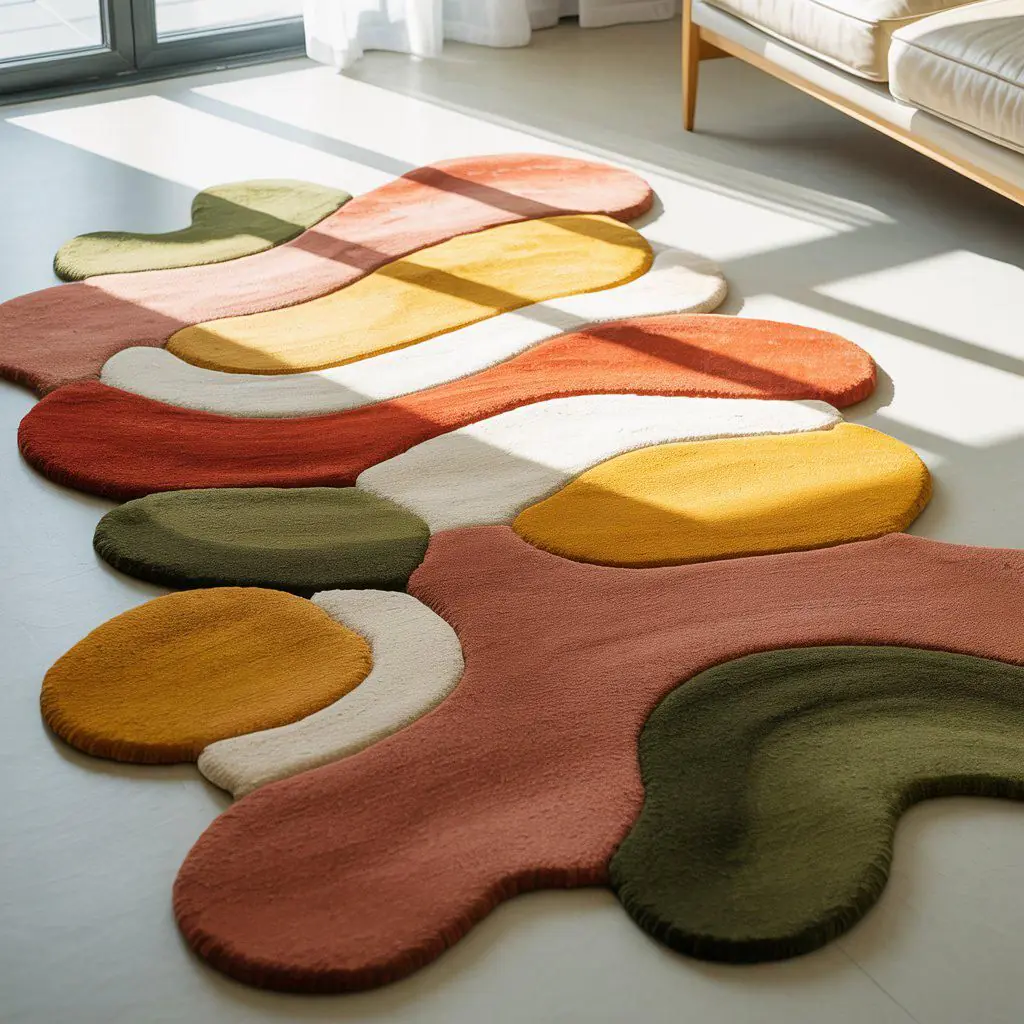
A home without carpets and rugs often feels incomplete. These surfaces define zones, connect furniture, and soften acoustics. In large villas a rug can separate a living area from a dining area without a wall. In smaller apartments a single rug centers the room. Bedrooms are personal, and a soft piece makes mornings kinder. Children’s rooms become play maps. Offices use a flatweave to control echo and underline a focused corner. The floor sets the room’s rhythm, and the rug is the conductor’s small movement that keeps everything in time.
Room sizing guide
| Room Type | Typical Room Size | Common Rug Size | Placement Tip |
|---|---|---|---|
| Living room | 5 m × 4 m | 2 m × 3 m to 3 m × 4 m | Front legs of sofas and chairs on the rug |
| Dining room | 4 m × 4 m | 3 m × 4 m | Allow 60 cm beyond table edges for chairs |
| Bedroom, queen | 4.5 m × 3.5 m | 2 m × 3 m | Place under lower two thirds of the bed |
| Bedroom, runners | Varies | 0.8 m × 2 m | One on each side for a soft first step |
| Hallway | 1.2 m wide | 0.8 m × custom length | Leave small margins at walls for air |
Scale is learned by eye and by measuring tape. If the seating group measures about three by two meters, a rug around two by three meters often suits. In high ceiling rooms a larger base keeps the space grounded. Neutral fields create calm, bold patterns hold attention. Both paths work, as long as furniture, light, and floor agree on a shared mood.
Weaving traditions and the patience of craft
Hand weaving moves at the pace of breath and hands. A knot becomes a dot, many dots make a curve, many curves build a garden. In villages where patterns are remembered more than written, designs walk through generations. Mothers pass them to daughters, elders advise on color, and a new piece begins to feel like an old song. Flatweaves tell a different tale with interlaced warps and wefts that fold and travel easily. Tribal stripes and small medallions give these textiles a direct voice. Over time, pile weaves borrowed from flatweaves and flatweaves borrowed from pile. The family resemblance stayed clear.
Machine weaving joined the story in the modern era, opening access to affordable choices for rooms that see heavy use. It did not erase handwork. It widened the stage. In the UAE many families keep one or two handmade pieces for special rooms, and fill other spaces with durable machine-woven selections that handle daily life and the occasional cup of karak tipped by a laughing child.
Handmade vs machine-made comparison
| Type | Look & Feel | Time to Produce | Longevity | Price Range | Best For |
|---|---|---|---|---|---|
| Handmade | Nuanced colors, unique character | Weeks to years | Very high with care | Mid to premium | Heirlooms, formal rooms |
| Machine-made | Consistent, many patterns | Hours to days | High for daily use | Budget to mid | Family rooms, rentals |
Economics, souks, and the price of comfort
Markets teach buyers and sellers to respect each other’s time. In Dubai and Sharjah, choices run from handmade to machine-woven, from pure wool to blends. Prices reflect fiber, size, knot count, and origin. A small synthetic flatweave might start around AED 200. A comfortable family room wool piece sits between AED 1,200 and AED 3,500. Fine handmade silk or high knot wool for formal spaces can reach AED 10,000 to AED 20,000 and above. These are not strict rules, only signposts on a road where taste and budget walk together. Many Emirati families still gift a rug for weddings or housewarmings, because the object is useful and beautiful at once, and it keeps working every day.
Modern usage in UAE interiors
Modern apartments and villas across the Emirates often combine clean lines, muted walls, and statement floors. A living room might carry a plain base rug with a smaller patterned highlight layered on top. This method adds depth in large rooms at Palm Jumeirah, and in compact studios in JVC it separates a sitting zone from a sleeping zone without building a wall. Offices in Business Bay or near Corniche Road use flatweaves to manage echo and suggest a focused workspace. Tall glass spaces benefit from a rug that absorbs sound. Rooms with heavy furniture enjoy patterns that spread visual lightness.
Layering tips
- Use a large neutral base to calm the room, then a smaller patterned piece to add character.
- Let borders breathe. Do not crowd a sofa leg into a busy corner motif.
- Balance pile heights so walking feels even.
- Use a rug pad on tile for comfort and safety.
Instylea and the present moment
Homes change with time, yet some needs stay the same. Floors still ask for comfort, and families still ask for rooms that welcome conversation. In Dubai, Instylea helps households and workplaces select pieces that live well in daily use. The focus is on materials that feel good underfoot, sizes that respect room proportions, and finishes that look correct in soft evening light. They work with imported first hand materials and match practical advice with design sense. This is not about collecting objects, it is about building rooms where people like to spend time.
Caring for carpets and rugs
A carpet rug stays beautiful when daily habits stay simple. Vacuum lightly every few days to keep dust from settling. For silk and fine wool in formal rooms, professional cleaning is a wise choice. Rotate pieces seasonally to even out sunlight. Use felt pads under heavy table legs to avoid dents. In coastal neighborhoods watch humidity during storage. For the inevitable spill, breathe, blot, and test before you apply any solution.
Cleaning and care table
| Issue | First Response | What to Avoid | When to Call a Pro |
|---|---|---|---|
| Fresh spill | Blot with clean cloth, water first | Rubbing hard, hot water | Silk, set stains, unknown dyes |
| Sand and dust | Vacuum regularly, low setting | Beater bar at high setting | Deep clean annually for heavy use |
| Sun fade | Rotate every few months | Leaving one side always in sun | Color correction on fine pieces |
| Slipping | Use a rug pad on tile | Adhesive tapes on delicate backs | Custom underlay for large sizes |
| Storage | Clean, roll with pile in, breathable wrap | Plastic wrap, damp rooms | Long term storage or valuable pieces |
Choosing the right carpet rug for your home
Selection combines taste and practicality. Measure the room, measure the seating group, then pick a size that connects furniture without swallowing it. Consider pile height, since doors and chairs need clearance. For families with young children and pets, patterns and darker tones are forgiving. For calm bedrooms neutrals whisper. For lively reception rooms bold motifs hold attention and make conversation corners feel distinct. If you prefer the look of a gallery, choose one strong piece and let the rest of the room keep quiet. If you like energy, layer smaller accents on a steady base.
Carpets and rugs as art
Some pieces leave the floor and hang on the wall. A wall hung rug protects delicate fibers and lets the viewer stand back to read the whole composition. In many Emirati homes a special piece anchors a formal room the same way a painting does. Slow looking pays off. A field that first appears as one red reveals many reds, like dates on a platter that only look the same from far away. Borders begin to speak, corners reply, and the viewer notices the mind behind the hand. This is why some families keep a rug for decades and never tire of it.
Outdoors, runners, and small places with big voices
Hallways become more than passages when a runner gives them a task. In villas with staircases a fitted runner protects edges and quiets steps. In apartments a short runner near the entry catches sand and tells guests that the clean floor matters. Shaded terraces welcome outdoor pieces made from weather resistant fibers. During winter evenings in Abu Dhabi and Dubai, a rug extends indoor comfort into the cool air. The habit of gathering close to the ground does not end at the threshold, it continues wherever people choose to be together.
Numbers, budgets, and quiet pride
Budgets in AED help choices without limiting taste. A starter flatweave for a small room can be AED 200 to AED 600. A family room wool piece in a common size like 2 m by 3 m often sits between AED 1,200 and AED 3,500. Larger handmade wool or silk for formal reception rooms may range from AED 10,000 to AED 20,000 or more. The best value is usually the piece you keep using. Longevity wins twice, once in service, and again in the steady pleasure of seeing the same good surface welcome you home.
Rugs and carpets, words that meet in the middle
People use both phrases, rugs and carpets and carpet and rugs, sometimes to mean size differences and sometimes out of habit. In many homes a rug is a movable piece and a carpet covers a larger area or an entire room. In daily speech the two terms blend. What matters is fit and feeling. A rug carpet that ties the room together earns its place no matter what name it carries. A carpet rug that welcomes the first step of morning earns thanks every day. The words overlap the way patterns overlap in layered designs, and the room is better for it.
From the first woven stripe in a desert tent to the quiet glow of a silk medallion beneath a chandelier in Abu Dhabi, the path remains steady. Floors ask for comfort, families ask for welcome, and carpets and rugs answer both requests with patience. They take footprints without complaint. They accept tea cups placed on trays. They absorb the laughter of children and the footsteps of guests. In return they ask for small favors, a regular vacuum, a turn in the sun, a careful blot when life tips a cup. The partnership is simple and it can last a lifetime. When a household chooses well and cares well, the piece becomes part of the family story, not a background, but a chapter written in wool and color. In that chapter there is always a sitting place, a small table, and faces turned toward one another while the ground keeps the memory of their time together.
Frequently Asked Questions (FAQs)
Explore the finest interiors in the UAE market. Step inside stunning spaces. browse now!
